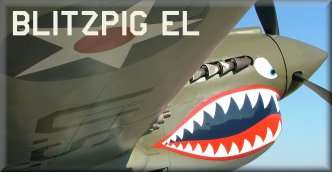
 |
|
|||||||
| IL-2 Sturmovik The famous combat flight simulator. |
 |
|
|
Thread Tools | Display Modes |
|
#141
|
|||
|
|||
|
edit: cleaned this thread and removed my OT posts
Last edited by swiss; 12-20-2010 at 04:10 PM. |
|
#142
|
||||
|
||||
|
EDIT: same as swiss
__________________
LEVEL BOMBING MANUAL v2.0 | Dedicated Bomber Squadron 'MUSTANG' - compilation of online air victories Last edited by T}{OR; 12-20-2010 at 03:55 PM. |
|
#143
|
||||
|
||||
|
The P38 was powered by a pair of V12 Allisons that were turbocharged.
__________________
 Personally speaking, the P-40 could contend on an equal footing with all the types of Messerschmitts, almost to the end of 1943. ~Nikolay Gerasimovitch Golodnikov |
|
#144
|
||||
|
||||
|
Quote:
Back to the flames etc. Here is a nice example of modification done to prevent visible exhaust flames during night fighting: 
__________________
LEVEL BOMBING MANUAL v2.0 | Dedicated Bomber Squadron 'MUSTANG' - compilation of online air victories Last edited by T}{OR; 12-20-2010 at 11:52 AM. Reason: 110 nightfighter pic |
|
#145
|
||||
|
||||
|
Re turbochargers: According to Wiki (http://en.wikipedia.org/wiki/Rolls-Royce_Merlin)
In 1940 Rolls-Royce considered adapting the Merlin to use an exhaust-driven turbocharger to increase the power of the Merlin. Although a lower fuel consumption was an advantage, the turbocharger was rejected in favour of a two-stage supercharger. [Lovesey 1946, p. 220] Most of the Merlin's technical improvements resulted from more efficient superchargers, designed by Stanley Hooker, and the introduction of aviation spirits with increased octane ratings. Numerous detail changes were made internally and externally to the engine to withstand increased power ratings and to incorporate advances in engineering practices. [Lovesey 1946, pp. 224-226] On the subject of Ejector Exhausts: I’m surprised that no one has commented on what today we would probably call a “Value Added” feature of Ejector Exhausts. The following is an extract from the same Wiki article: The Merlin consumed an enormous volume of air at full power (equivalent to the volume of a single-decker bus per minute), and with the exhaust gases exiting at 1,300 mph (2,100 km/h) it was realised that useful thrust could be gained simply by angling the gases backwards instead of venting sideways. During tests, 70 pounds-force (310 N; 32 kgf) thrust at 300 miles per hour (480 km/h), or roughly 70 horsepower (52 kW) was obtained which increased the level maximum speed of the Spitfire by 10 mph (16 km/h) to 360 mph (580 km/h). The first versions of the ejector exhausts featured round outlets, while subsequent versions of the system used "fishtail" style outlets which marginally increased thrust and reduced exhaust glare for night flying. In September 1937 the Spitfire prototype, K5054, was fitted with ejector type exhausts. Later marks of the Spitfire used a variation of this exhaust system fitted with forward-facing intake ducts to distribute hot air out to the wing-mounted guns to prevent freezing and stoppages at high altitudes, replacing an earlier system that used heated air from the engine coolant radiator. The latter system had become ineffective due to improvements to the Merlin itself which allowed higher operating altitudes where air temperatures are lower.[23] Ejector exhausts were also fitted to other Merlin-powered aircraft. [Price 1982, p. 51] Hope I haven’t wandered too far OT. Pete
__________________
Puffer_2 |
|
#146
|
|||
|
|||
|
|
|
#147
|
||||
|
||||
|
Very nice link, thank you for posting.
Please correct me if I am wrong: Quote:
- - - EDIT: Discussion moved to a new thread, here: http://forum.1cpublishing.eu/showthread.php?t=17720 Strictly OT posts were deleted/edited.
__________________
LEVEL BOMBING MANUAL v2.0 | Dedicated Bomber Squadron 'MUSTANG' - compilation of online air victories Last edited by T}{OR; 12-20-2010 at 04:02 PM. Reason: selfmoderation |
|
#148
|
||||
|
||||
|
Small remark on the gasses that drive the turbo: the driving force is pressure, not speed. Turbo's work due to a pressure differential with the outside air, while a turbo-compound uses the kinetic energy of the exhaust gasses. That's why the P47's critical altitude is a function of turbocompressor speed (roughly 20K rpm) because due to the lower pressure outside, the turbine was spinning faster, until it's constructional limit was reached (and the pilot warned).
Turbo-compounds use a "blow-down" turbine and as a result do not produce parasitical back pressure on the engine. In theory a blow-down turbine can be added sequentially to a turbocompressor, adding even more efficiency to a system, maybe by driving a generator or coolant pump or as in case of the Wright R-3350 the crankshaft via hydraulic clutches. Interesting document by Curtiss-Wright Co. on the Wright R-3350 Turbo-Compound: http://www.enginehistory.org/Wright/TC%20Facts.pdf |
|
#149
|
||||
|
||||
|
Quote:
I wish Flugwerk would build a 190C, just to see how it performs. Last edited by Azimech; 12-20-2010 at 12:42 PM. |
|
#150
|
||||
|
||||
|
Quote:
__________________
LEVEL BOMBING MANUAL v2.0 | Dedicated Bomber Squadron 'MUSTANG' - compilation of online air victories |
 |
| Thread Tools | |
| Display Modes | |
|
|